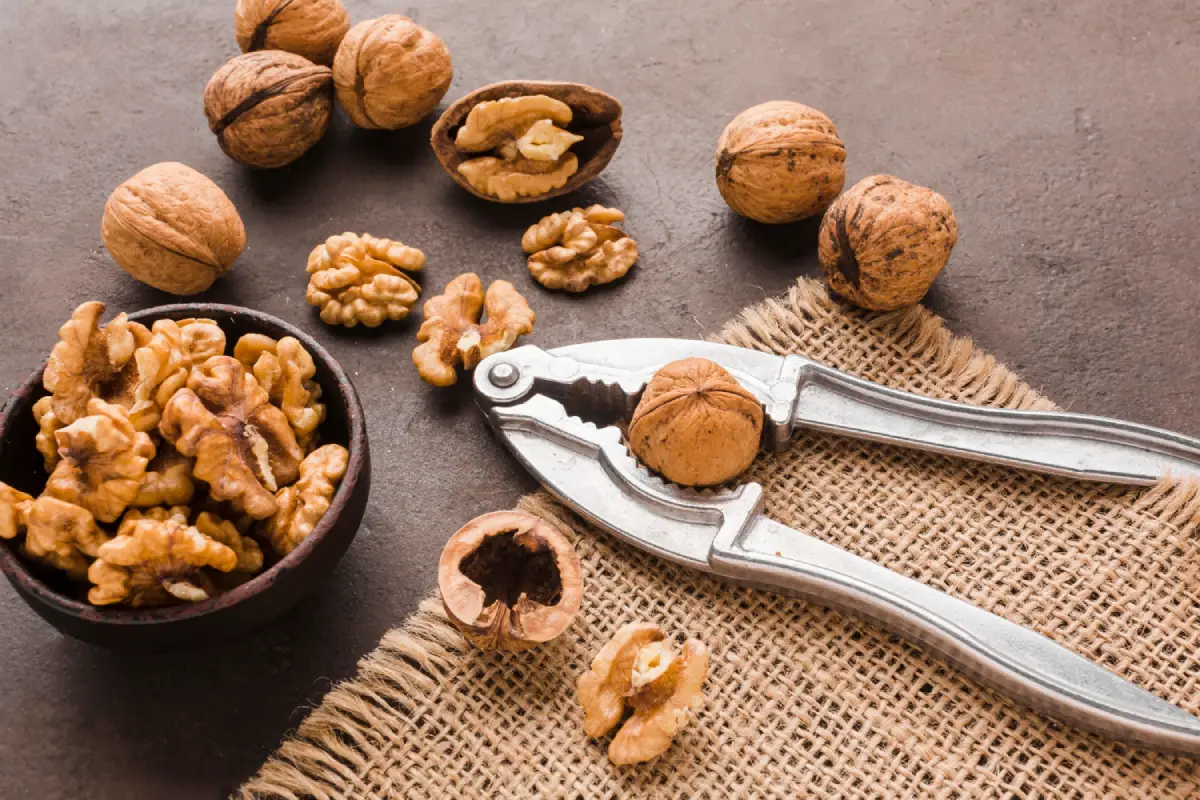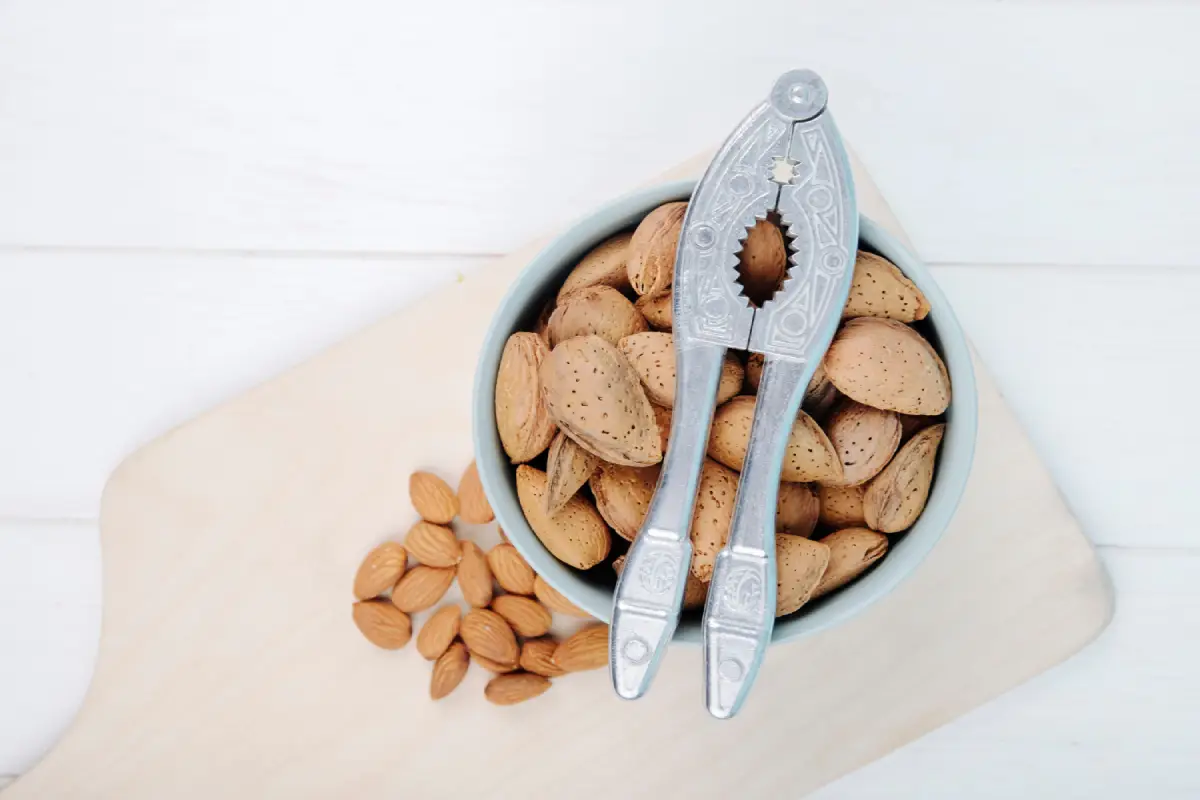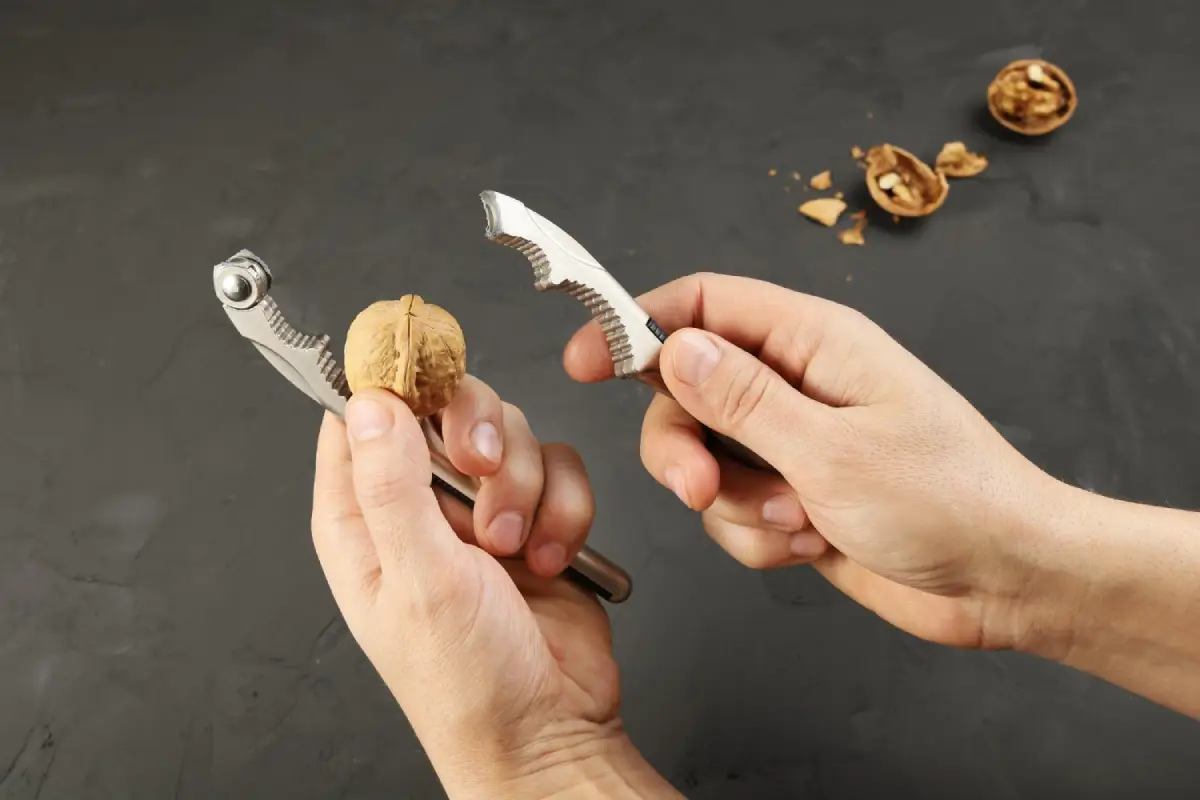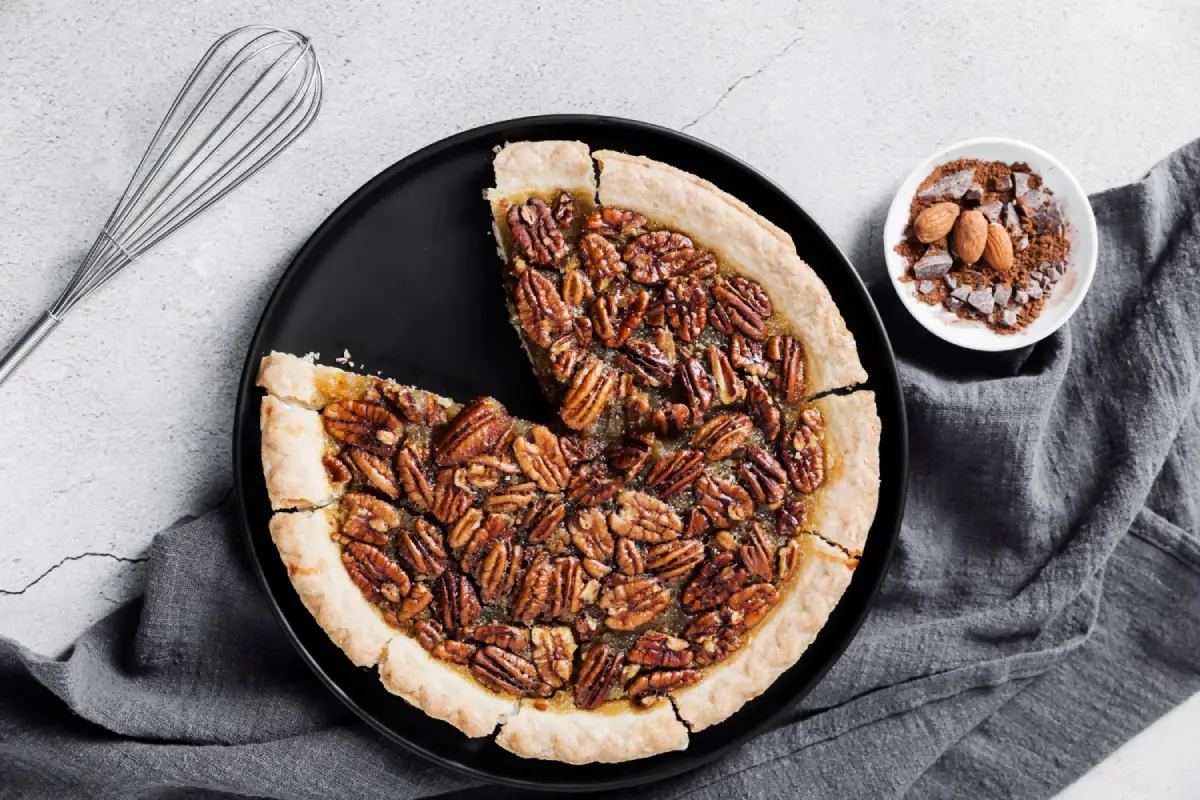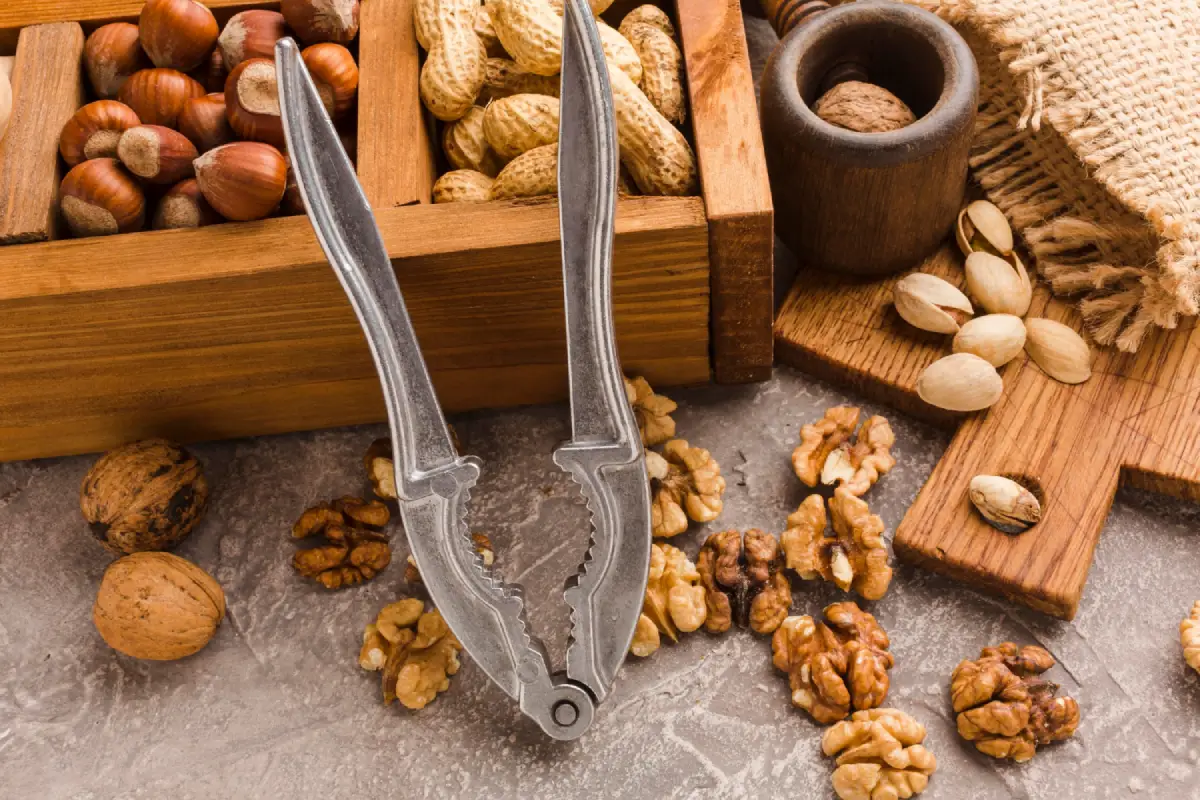Pecan cracking might seem like a simple task, but there’s a world of difference between haphazardly shelling nuts and doing it with the finesse and efficiency of a well-designed pecan cracker. Pecans, with their rich flavor and numerous health benefits, are a favorite in kitchens worldwide. However, cracking them open to reveal the golden, delicious nut inside can be a challenge without the right tool. This is where a pecan cracker comes into play. In this guide, we’ll dive deep into everything about pecan crackers—from understanding the basics to exploring various types and methods, and even some delightful recipes to make the most of your freshly cracked pecans. Whether you’re a seasoned pecan lover or just discovering the joys of these crunchy treats, this article is your ultimate resource for mastering the pecan cracker.
Certainly! I’ll incorporate more transition words to enhance the flow and readability of the section. Here’s the revised text:
How Does a Pecan Cracker Work?
Understanding the operation of pecan crackers reveals the ingenious engineering behind these essential kitchen tools. This section dives into the mechanics of both manual and mechanical devices, showing how they effectively crack tough shells while protecting the delicate nuts inside.
The Mechanics of Manual Pecan Crackers
Manual pecan crackers, often requiring manual force, operate on the principle of leverage. When you apply force to the handles, the internal mechanism exerts controlled pressure on the pecan. This design ensures even distribution of pressure, cracking the shell without crushing the nut. The variations in manual crackers, from handheld plier-like tools to larger, table-mounted options, affect the cracking process differently.
Inside Mechanical Pecan Crackers
Mechanical pecan crackers, including hand-cranked models and automated machines, utilize gears, levers, and sometimes hydraulics. Their ability to apply consistent force makes them ideal for cracking large batches of pecans. These systems are designed to handle varying pecan sizes and shell hardness, ensuring efficient and uniform cracking.
Design and Efficiency in Pecan Crackers
The design of a pecan cracker significantly impacts its efficiency. Factors like the cracking mechanism’s shape, the materials used, and the handle’s ergonomics determine the effort required and the yield of intact nuts. Innovations in design have led to more effective and user-friendly pecan crackers, accommodating a wide range of user needs.
Advances in Pecan Cracking Technology
Recent advancements in pecan cracking technology have brought about stronger, more durable materials and precision engineering for consistent cracking. Automated crackers now feature digital controls for precise adjustments, catering to different pecan sizes and preferences. These technological improvements have enhanced the efficiency and accessibility of pecan cracking for various users.
The Easiest Way to Crack Pecans
Cracking pecans efficiently is a skill that enhances both cooking and snacking experiences. In this section, we provide practical advice on the easiest and most effective methods for cracking pecans, ensuring you get optimal results with minimal effort.
Selecting the Right Tool
Choosing the right pecan cracker is essential. For occasional use, a simple hand cracker suffices, offering ease and portability. Conversely, for frequent or bulk cracking, a more robust mechanical cracker is ideal, providing consistency and saving time.
Step-by-Step Cracking Guide
Here’s a step-by-step guide to cracking pecans effectively. Start by positioning the pecan correctly in the cracker. Apply gradual pressure to avoid shattering the shell. The goal is a clean break, leaving the nut intact, especially important for recipes requiring whole halves.
Tips for Efficient Cracking
Additionally, consider these tips for a better cracking experience: Preparing the nuts beforehand can make a difference. Gently tapping the pecan or soaking it in water can soften the shell. Also, mastering the right amount of pressure is key to avoiding broken nuts.
Alternative Methods Without a Cracker
Lastly, if you find yourself without a pecan cracker, there are alternative methods. Tools like a hammer or a pair of pliers can work in a pinch. Wrap the pecan in a cloth to contain the shell fragments, and gently tap or squeeze until the shell cracks.
Pecan Cracking Techniques
Mastering various pecan cracking techniques can significantly enhance your efficiency and enjoyment of this task. This section delves into different methods, offering insights for both beginners and seasoned pecan enthusiasts.
Traditional Cracking Methods
Traditional methods often involve simple tools like handheld crackers. Firstly, you need to find the pecan’s seam for the best cracking point. Then, by applying steady pressure, you can achieve a clean break. This method is time-tested and perfect for those who enjoy a hands-on approach.
Innovative Cracking Strategies
Furthermore, innovative strategies have emerged, blending traditional methods with modern twists. These include using devices that crack multiple nuts simultaneously or tools that adjust to different pecan sizes for uniform cracking. Such advancements cater to those looking for efficiency and ease.
Professional Techniques for Bulk Cracking
Moreover, professional techniques come into play when dealing with bulk cracking. Commercial pecan crackers, which can process large quantities quickly, are vital in such scenarios. They use precise mechanical force, ensuring consistent results with minimal nut damage.
Tips for Perfect Cracking Every Time
Additionally, achieving the perfect crack every time requires practice and patience. Key tips include selecting the right nuts (avoiding those with visible cracks or holes), using the appropriate tool for your needs, and understanding the nuances of different pecan varieties.
Why Boil Pecans Before Cracking?
Boiling pecans before cracking them is a technique that might seem unusual at first, but it has several benefits that can enhance the overall pecan-cracking experience. This section explains why this method is effective and how it can improve your pecan-cracking results.
Softening the Shell
The primary reason for boiling pecans is to soften the shell. Heat and moisture from boiling water make the shell more pliable, reducing the effort required to crack it open. This method is particularly useful for those who find manual cracking challenging or who are working with particularly hard-shelled pecans.
Easier Nut Removal
Additionally, boiling can make the removal of the nut from the shell easier. The softened shell tends to break more cleanly, reducing the chances of the nut fragmenting. This results in more whole pecans, which are ideal for baking and presentation.
Enhancing Flavor and Texture
Boiling pecans can also enhance their flavor and texture. The heat from boiling can release the oils within the pecans, intensifying their rich, nutty flavor. This makes the pecans more palatable, especially if they are to be used in cooking or baking.
Preparing Pecans for Cooking
Lastly, boiling is a preparatory step for certain recipes. For dishes that require softer or partially cooked pecans, this method serves as an efficient way to prepare the nuts. It ensures that the pecans are ready to be incorporated into various culinary creations.
Pecan Recipes
Freshly cracked pecans bring a burst of flavor and texture to any recipe. In this section, we’ll share some delightful pecan recipes, ranging from sweet to savory, that will inspire you to make the most of your pecan-cracking efforts.
Classic Pecan Pie
A timeless favorite, this classic pecan pie recipe is a testament to the nut’s versatility in baking. This recipe will guide you through creating a rich, sweet filling encased in a flaky, buttery crust, with pecans as the star ingredient. Perfect for holidays or as a comforting treat, pecan pie is a must-try for any pecan lover.
Savory Pecan-Crusted Chicken
For a savory twist, try pecan-crusted chicken. This recipe involves coating chicken breasts in a mixture of ground pecans and herbs, resulting in a dish that’s crispy on the outside and tender on the inside. It’s a unique way to incorporate pecans into your main course.
Pecan and Maple Oatmeal
Pecans can also be a great addition to your breakfast routine. This recipe for pecan and maple oatmeal combines the nutty crunch of pecans with the sweetness of maple syrup, creating a warm and satisfying start to your day.
Spiced Pecan Snack Mix
Lastly, spiced pecan snack mix is a fantastic way to enjoy pecans as a snack. This recipe includes a blend of pecans with spices and other nuts, roasted to perfection. It’s an ideal snack for gatherings or for a quick, energy-boosting treat.
Choosing the Right Pecan Cracker
Selecting the perfect pecan cracker is crucial for an enjoyable and efficient cracking experience. This section provides guidance on various factors to consider, helping you make an informed decision that suits your specific needs.
Assess Your Usage Frequency
First and foremost, consider how often you plan to use the pecan cracker. For occasional users, a simple, handheld cracker is usually sufficient. On the other hand, if you crack pecans regularly or in large quantities, opting for a more robust, mechanical cracker would be a better choice, offering greater efficiency and consistency.
Ergonomics and Comfort Matter
Additionally, the comfort of using the pecan cracker is paramount, especially for manual models. Look for a cracker with ergonomic handles and an easy-to-operate mechanism. This consideration is particularly crucial if you have limited hand strength or anticipate using the tool for extended periods.
Durability and Material Quality Are Key
Furthermore, the durability of your pecan cracker, largely dependent on its material quality, is a vital aspect to consider. Stainless steel crackers typically offer greater longevity and resistance to wear, while those with plastic components might not endure as well under heavy or prolonged use.
Size and Storage Considerations
Lastly, think about the size and storage requirements of the pecan cracker. Compact designs are preferable if kitchen space is limited. However, more advanced models, although efficient, may require additional storage space, so it’s important to ensure you have adequate room for your chosen cracker.
Maintenance and Care for Your Pecan Cracker
Proper maintenance and care of your pecan cracker are crucial for extending its lifespan and ensuring it remains efficient and safe to use. This section offers practical tips on how to keep your pecan cracker in top condition.
Regular Cleaning
Firstly, regular cleaning is essential. After each use, clean your pecan cracker to remove any nut residue or shell fragments. For most crackers, a simple wipe with a damp cloth is sufficient. However, for more intricate models, a thorough cleaning according to the manufacturer’s instructions is recommended.
Periodic Inspection
Furthermore, it’s important to periodically inspect your pecan cracker for signs of wear and tear. Check for any loose components, cracks, or dullness in the cracking mechanism. Addressing these issues promptly can prevent further damage and maintain the cracker’s effectiveness.
Proper Storage
Additionally, proper storage plays a significant role in the care of your pecan cracker. Store it in a dry, cool place to prevent rust and deterioration. Avoiding exposure to extreme temperatures and moisture will keep the cracker in good condition for longer.
Lubrication for Mechanical Crackers
Lastly, for mechanical pecan crackers, regular lubrication is necessary. Apply a food-safe lubricant to moving parts as recommended by the manufacturer. This practice will ensure smooth operation and reduce the risk of mechanical failures.
FAQs About Pecan Crackers
In this section, we answer some frequently asked questions about pecan crackers, offering insights and tips to help you make the most of this handy kitchen tool.
How Does a Pecan Cracker Work?
A pecan cracker typically operates on a leverage or pressure mechanism. By applying force to the handles or the lever, the cracker exerts targeted pressure on the pecan shell, cracking it open without damaging the nut inside. The specific mechanics can vary depending on the type of pecan cracker.
What is the Easiest Way to Crack Pecans?
The easiest way to crack pecans involves using a quality pecan cracker suited to your needs. Position the pecan correctly in the cracker, apply steady pressure, and the shell should crack open cleanly. For tougher shells, pre-boiling the pecans can soften them, making them easier to crack.
How to Eat Pecans?
Pecans can be eaten raw, roasted, or used in various recipes. They are a versatile nut, great in salads, baked goods, or as a snack. Eating pecans raw preserves their natural oils and flavors, while roasting them can enhance their nuttiness.
Why Do You Boil Pecans Before Cracking?
Boiling pecans before cracking softens the shells, making them easier to open. It also helps in getting cleaner breaks, which is particularly useful when whole pecan halves are needed for recipes. Additionally, boiling can enhance the nuts’ flavor and texture.
How to Crack a Pecan?
To crack a pecan, place it in the cracker with the seam facing up. Apply pressure gradually until the shell cracks. For manual crackers, leverage is key; for mechanical ones, adjust the force as needed. Ensure the nut remains intact for the best results.
How to Crack a Pecan Nut?
Cracking a pecan nut involves similar steps: find the seam, use the right tool, and apply pressure carefully. If the pecan doesn’t crack on the first attempt, adjust the position slightly and try again. Patience and practice are essential for mastering this skill.
Pecan Cracker Conclusion
Throughout this comprehensive guide, we’ve embarked on an in-depth exploration of pecan crackers, delving into their various types, intricate mechanics, and effective usage techniques. From the straightforward nature of manual crackers to the advanced capabilities of mechanical models, we’ve highlighted how these tools can transform the often tedious task of cracking pecans into an enjoyable activity.
Moreover, we’ve uncovered the practical reasons behind boiling pecans before cracking and offered an array of delicious recipes to inspire your culinary endeavors. Furthermore, practical advice on selecting the ideal pecan cracker, maintaining it properly, and answers to common questions ensure you are well-equipped for your pecan-cracking journey.
In conclusion, mastering the art of pecan cracking, whether for creating a delectable pie, enjoying a healthy snack, or simply relishing the process, is a worthwhile endeavor. Armed with the right knowledge and tools, you can unlock the full potential of these delightful nuts. We hope this guide has been informative and inspiring, especially if you’re interested in growing your own pecan trees. Please feel free to share your own pecan-cracking experiences and recipes in the comments – we’re eager to hear from you and continue the conversation!

